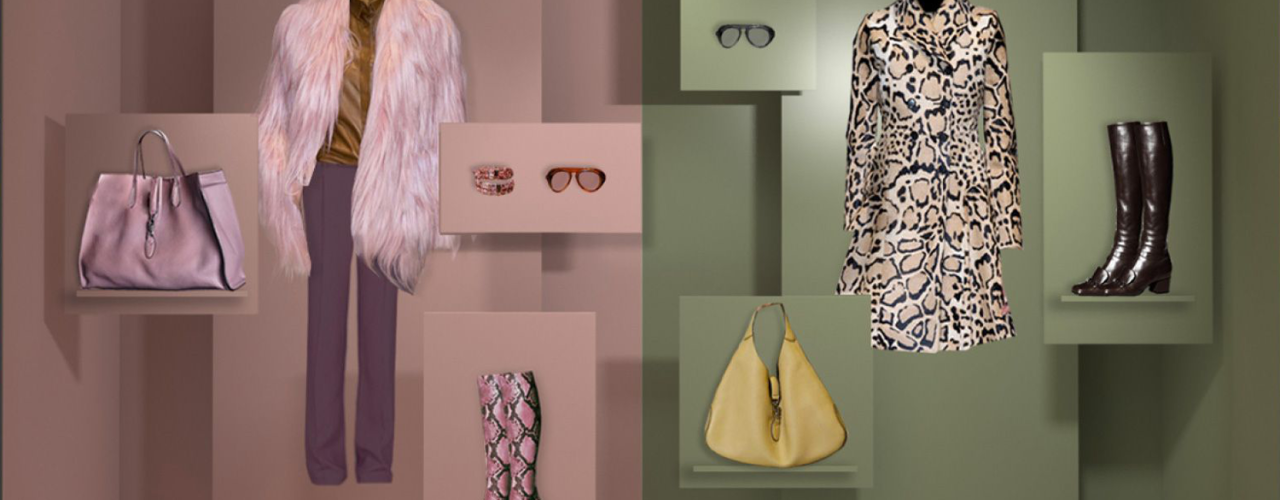Where Are We At?

The Neuroscientific Approach to a Successful Fashion Visual Merchandising
The Power of V.M. as a Business Tool
Years ago, I was a manager for the V.M. department in one of the luxury fashion houses. I remember in training that the purpose of V.M. is to evoke an unique experience that flows naturally to the audience. For example, when customers look across the space from one corner to another, they should be able to grasp the “intention” or “idea” that’s being conveyed to them. They may or may not already know the brand’s image and creative concept, but it should at least inspire them to ask questions or entice them to consider making a purchase.
Imagine customers passing by the store’s window display or the moment they step inside the space, V.M. is the first point of communication through sensory stimulation (i.e., sight, smell, and sound) within the surroundings without an actual verbal expression. Previous research has suggested that an undesirable V.M. layout which leads to poor communication can negatively impact consumers' shopping experience and may even deter them from shopping at the same store again. In contrast, customers are more likely to make an impulsive purchase if they are exposed to the right V.M. stimuli. Perhaps the biggest challenge is to strike the right balance of key “V.M. stimuli” since human behaviors and emotions can vary greatly between individuals - but is there a way to categorize them into different archetypes so that brands can create optimal V.M. spaces to enhance purchasing?

V.M. is a Product of Art and Science
In practice, there are a set of standard techniques when it comes to building an effective V.M., such as a clear focal point, color scheme, memorable scent, ambiance with lighting etc. Ultimately, knowing and understanding the brand’s targeted clientele is key to developing successful V.M. strategies. With that in mind we should also consider defining V.M. as a product of art and science. Since the majority of human behaviors begin as an unconscious process, sometimes we aren't even aware why people would react either positively or negatively to certain fashion V.M. stimuli. Therefore it is critical for businesses to understand how V.M. impacts our neurochemistry, and to potentially leverage science-based knowledge to optimize V.M. strategies. Recently, neuroscientists and scientific experts have linked successful and unsuccessful fashion V.M.s to cognitive behaviors. In another study by Kim and Lee (2017), they found that participant subjects who reacted negatively to fashion V.M. tend to exhibit a greater brain activity, as measured by changes in cerebral blood flow. These studies provide evidence that it is possible to use fact-based scientific methods to customize V.M. strategies that cater to different cognitive behaviors of customers.

A Neuroscientific Approach to Customize Fashion V.M. based on Cognitive Behavior
In a follow-up study by Kim et al. (2020), they investigated the pattern of brain activities in response to different types of V.M. In their experiment, 20 female participants (ages range 20 - 39) that considered themselves to have either high or low involvement in fashion were asked to wear a neuro-imaging device that measures the hemodynamic (blood flow) responses in the cerebral cortex when given images of three types of V.M. stimuli: Type 1: Fact-based, realistic type: V.M. that is based on actual experience or events. Type 2: Corrected-processing, informative type: V.M. that connects to the object of value and the actor and situation surrounding it. Type 3: Creative, imaginative type: V.M. that makes a story that does not necessarily fit the characteristics of a brand or product. What their results showed was that participants who considered themselves “highly-involved” in fashion had significantly higher brain activation to creative V.M. (Type 3), while the brains of those that considered themselves to have a “low-involvement” in fashion tended to become more activated upon exposure to fact-based V.M. (Type 1). No specific patterns were stated between the two groups for corrected processing (Type 2). In addition, the “highly-involved” in fashion participants showed elevated brain activity in their orbital frontal cortex, a region responsible for emotional empathy, when confronted with a creative V.M. This may also suggest that highly-involved fashion consumers likely have emotional engagement for creative V.M., whereas less-involved fashion consumers may rely more on cognitive empathy. However, we need to keep in mind the limitations of this study for example its sample size, use of female participants only, the specific age group, and the fact that the fashion industry does not have a standardized “V.M. types” yet.

Where do we go from here?
V.M. contributes to a brand’s unique personality and image. The referenced studies in this piece highlight the possibility of using scientific methods to create an effective V.M. catering to the brand and its clientele. By relying on fact-based data, brands can develop objective strategies that would in turn ensure the optimal consumer engagement. But as I mentioned before, research on the topic of neuroscience in fashion is relatively understudied compared to purchasing psychology for example. However, as mentioned by the authors in Kim et al. (2020) paper, their study is just the beginning and hopefully will provide the launching pad for future scientific study of fashion V.M. For example, combining this approach with measurement of neurotransmitters (dopamine, serotonin, epinephrine) may yield more insights into how V.M. affects consumer activity and facilitate V.M. optimization for maximum impact. Importantly, we must not forget to appreciate the artists that are involved with V.M. By using colors, textures, shapes and imagination, artists provoke emotion. So, by combining art and science, we can generate V.M. strategies that are beautiful, effective and meaningful to as broad a consumer demographic as possible.














